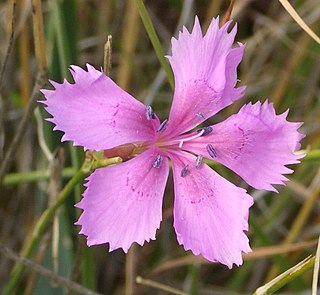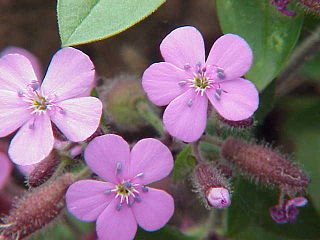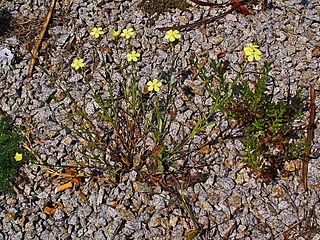
Ploidy is the number of complete sets of chromosomes in a cell, and hence the number of possible alleles for autosomal and pseudoautosomal genes. Somatic cells, tissues, and individual organisms can be described according to the number of sets of chromosomes present : monoploid, diploid, triploid, tetraploid, pentaploid, hexaploid, heptaploid or septaploid, etc. The generic term polyploid is often used to describe cells with three or more chromosome sets.

Polyploidy is a condition in which the cells of an organism have more than two paired (homologous) sets of chromosomes. Most species whose cells have nuclei (eukaryotes) are diploid, meaning they have two sets of chromosomes—one set inherited from each parent. However, some organisms are polyploid, and polyploidy is especially common in plants. Most eukaryotes have diploid somatic cells, but produce haploid gametes by meiosis. A monoploid has only one set of chromosomes, and the term is usually only applied to cells or organisms that are normally haploid. Males of bees and other Hymenoptera, for example, are monoploid. Unlike animals, plants and multicellular algae have life cycles with two alternating multicellular generations. The gametophyte generation is haploid, and produces gametes by mitosis, the sporophyte generation is diploid and produces spores by meiosis.

Dianthus caryophyllus, commonly known as the carnation or clove pink, is a species of Dianthus. It is probably native to the Mediterranean region but its exact range is unknown due to extensive cultivation for the last 2,000 years.

Caryophyllaceae, commonly called the pink family or carnation family, is a family of flowering plants. It is included in the dicotyledon order Caryophyllales in the APG III system, alongside 33 other families, including Amaranthaceae, Cactaceae, and Polygonaceae. It is a large family, with 81 genera and about 2,625 known species.

Dianthus is a genus of about 300 species of flowering plants in the family Caryophyllaceae, native mainly to Europe and Asia, with a few species in north Africa and in southern Africa, and one species in arctic North America. Common names include carnation, pink and sweet william.

Saponaria is a genus of flowering plants in the family Caryophyllaceae. They are native to Europe and Asia, and are commonly known as soapworts.

Silene acaulis, known as moss campion or cushion pink, is a small mountain-dwelling wildflower that is common all over the high arctic and tundra in the higher mountains of Eurasia and North America,. It is an evergreen perennial flowering plant in the carnation family Caryophyllaceae.

Dianthus barbatus, the sweet William, is a species of flowering plant in the family Caryophyllaceae, native to southern Europe and parts of Asia. It has become a popular ornamental garden plant. It is a herbaceous biennial or short-lived perennial plant growing to 13–92 cm tall, with flowers in a dense cluster of up to 30 at the top of the stems. Each flower is 2–3 cm diameter with five petals displaying serrated edges. Wild plants produce red flowers with a white base, but colours in cultivars range from white, pink, red, and purple to variegated patterns. The exact origin of its English common name is unknown but first appears in 1596 in botanist John Gerard's garden catalogue. The flowers are edible and may have medicinal properties. Sweet William attracts bees, birds, and butterflies.

Paleopolyploidy is the result of genome duplications which occurred at least several million years ago (MYA). Such an event could either double the genome of a single species (autopolyploidy) or combine those of two species (allopolyploidy). Because of functional redundancy, genes are rapidly silenced or lost from the duplicated genomes. Most paleopolyploids, through evolutionary time, have lost their polyploid status through a process called diploidization, and are currently considered diploids e.g. baker's yeast, Arabidopsis thaliana, and perhaps humans.

According to the Political Constitution of the Free and Sovereign State of Chihuahua, Executive Power in that Mexican state resides with a single individual, the Constitutional Governor of the Free and Sovereign State of Chihuahua, who is chosen for a period of six years and cannot for any reason be re-elected. The term of governor begins on October 4 of the year of the election and finishes on October 3 after six years have elapsed. Gubernatorial elections are held two years prior to presidential elections.
Brassicoraphanus is any intergeneric hybrid between the genera Brassica and Raphanus (radish). The name comes from the combination of the genus names. Both diploid hybrids and allopolyploid hybrids are known and share this name.

Hybrid speciation is a form of speciation where hybridization between two different species leads to a new species, reproductively isolated from the parent species. Previously, reproductive isolation between two species and their parents was thought to be particularly difficult to achieve, and thus hybrid species were thought to be very rare. With DNA analysis becoming more accessible in the 1990s, hybrid speciation has been shown to be a somewhat common phenomenon, particularly in plants. In botanical nomenclature, a hybrid species is also called a nothospecies. Hybrid species are by their nature polyphyletic.

Plant evolution is the subset of evolutionary phenomena that concern plants. Evolutionary phenomena are characteristics of populations that are described by averages, medians, distributions, and other statistical methods. This distinguishes plant evolution from plant development, a branch of developmental biology which concerns the changes that individuals go through in their lives. The study of plant evolution attempts to explain how the present diversity of plants arose over geologic time. It includes the study of genetic change and the consequent variation that often results in speciation, one of the most important types of radiation into taxonomic groups called clades. A description of radiation is called a phylogeny and is often represented by type of diagram called a phylogenetic tree.

Caryophyllales is a diverse and heterogeneous order of flowering plants that includes the cacti, carnations, amaranths, ice plants, beets, and many carnivorous plants. Many members are succulent, having fleshy stems or leaves. The betalain pigments are unique in plants of this order and occur in all its families with the exception of Caryophyllaceae and Molluginaceae.

Dianthus pavonius, the peacock-eye pink, is a herbaceous perennial plant of the genus Dianthus of the family Caryophyllaceae.
A compilospecies is a genetically aggressive species which acquires the heredities of a closely related sympatric species by means of hybridisation and comprehensive introgression. The target species may be incorporated to the point of despeciation, rendering it extinct. This type of genetic aggression is associated with species in newly disturbed habitats, weed species and domestication. They can be diploid or polyploid, as well as sexual or primarily asexual. The term compilospecies derives from the Latin word compilo, which means to seize, to collect, to rob or to plunder. A proposed explanation for the existence of such a species with weak reproductive barriers and frequent introgression is that it allows for genetic variation. An increase in the gene pool through viable hybrids can facilitate new phenotypes and the colonisation of novel habitats. The concept of compilospecies is not frequent in scientific literature and may not be fully regarded by the biological community as a true evolutionary concept, especially due to low supporting evidence.

Bacterial Wilt of Carnations is a bacterial disease caused by the plant pathogen Paraburkholderia caryophylli. Previously, named Pseudomonas caryophilli, the pathogen is an aerobic gram negative bacteria known for only being capable of entering its host through wounds. Once inside the host, it colonizes the vascular system and roots causing symptoms such as, internal stem cracking, yellowing of the leaves, wilting, and the development of cankers. As a bacterial disease, Bacterial Wilt of Carnations can also be characterized by signs such as bacterial streaming, and bacterial ooze.

Dianthus knappii, or Knapp's carnation, in Bosnian Knapov karanfil or Knapov klinčić, is a perennial herbaceous plant in the carnation family, Caryophyllaceae. It is endemic at Dinaric mountains, on the border area between Herzegovina and Montenegro. In chromosome set has 2n = 30.
Dianthus freynii, or Freyn's carnation, in Bosnian Freynov karanfil or Freynov klinčić, is native endemic of Herzegovina karst, Bosnia and Herzegovina. It belongs to the family Caryophyllaceae (carnations).

Dianthus crinitus is a species of Dianthus in the carnation family found in northwestern Africa, the eastern Aegean Islands, Anatolia, the Transcaucasus and the North Caucasus, Lebanon, Syria, Iran, the Gulf States, and Oman. Common names may be associated more with some subspecies than others, and include hairy carnation and long‑haired pink. It grows on serpentine soils.
















